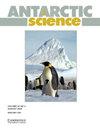早在更新世,在南极洲发现的致命蘑菇Galerina属就占领了这块大陆
IF 2
4区 地球科学
Q3 ENVIRONMENTAL SCIENCES
引用次数: 0
摘要
真菌可能是南极大陆和附近群岛中种类最多的真核生物,它们在温和或恶劣的栖息地中占据主导地位。然而,我们对其全球分布范围和南极种群的时间起源的了解相当有限或几乎不存在,尤其是对于不地衣化的物种。我们首次专注于阐明致命真菌担子菌门Galerina属的几个南极集合的分类身份和系统发育关系。通过使用来自通用真菌条形码的分子序列数据和包含178个标本的数据集,推断出的系统发育学表明,南极标本与亚世界性物种Galerina marginata、Galerina badipes和Galerina fallax相对应,它们最密切相关的种内遗传谱系来自北欧和北美。我们发现这些物种可能是南极特有种内谱系的宿主。此外,我们的年代测定分析表明,它们的南极种群起源于更新世,这一时间框架与南极德尚草、苔藓和一些两栖地衣等植物在南极定居的时间框架一致。总之,这些发现集中在南极最显著的陆地植物和真菌群落的集合的相同时间场景上。本文章由计算机程序翻译,如有差异,请以英文原文为准。
Deadly mushrooms of the genus Galerina found in Antarctica colonized the continent as early as the Pleistocene
Fungi are probably the most diverse group of eukaryotic organisms in the Antarctic continent and nearby archipelagos, and they dominate communities in either mild or harsh habitats. However, our knowledge of their global distribution ranges and the temporal origins of their Antarctic populations is rather limited or almost absent, especially for species that do not lichenize. We focused for the first time on elucidating the taxonomic identity and phylogenetic relationships of several Antarctic collections of the deadly fungal Basidiomycota genus Galerina. By using molecular sequence data from the universal fungal barcode and a dataset encompassing 178 specimens, the inferred phylogeny showed that the Antarctic specimens corresponded with the sub-cosmopolitan species Galerina marginata, Galerina badipes and Galerina fallax, and their most closely related intraspecific genetic lineages were from northern Europe and North America. We found that these species probably host Antarctic-endemic intraspecific lineages. Furthermore, our dating analyses indicated that their Antarctic populations originated in the Pleistocene, a temporal frame that agrees with that proposed for the Antarctic colonization of plants such as the grass Deschampsia antarctica, mosses and some amphitropical lichens. Altogether, these findings converge on the same temporal scenario for the assembly of the most conspicuous terrestrial Antarctic plant and fungal communities.
求助全文
通过发布文献求助,成功后即可免费获取论文全文。
去求助
来源期刊

Antarctic Science
地学-地球科学综合
CiteScore
3.60
自引率
6.20%
发文量
42
审稿时长
3 months
期刊介绍:
Antarctic Science provides a truly international forum for the broad spread of studies that increasingly characterise scientific research in the Antarctic. Whilst emphasising interdisciplinary work, the journal publishes papers from environmental management to biodiversity, from volcanoes to icebergs, and from oceanography to the upper atmosphere. No other journal covers such a wide range of Antarctic scientific studies. The journal attracts papers from all countries currently undertaking Antarctic research. It publishes both review and data papers with no limits on length, two-page short notes on technical developments and recent discoveries, and book reviews. These, together with an editorial discussing broader aspects of science, provide a rich and varied mixture of items to interest researchers in all areas of science. There are no page charges, or charges for colour, to authors publishing in the Journal. One issue each year is normally devoted to a specific theme or papers from a major meeting.
 求助内容:
求助内容: 应助结果提醒方式:
应助结果提醒方式:


